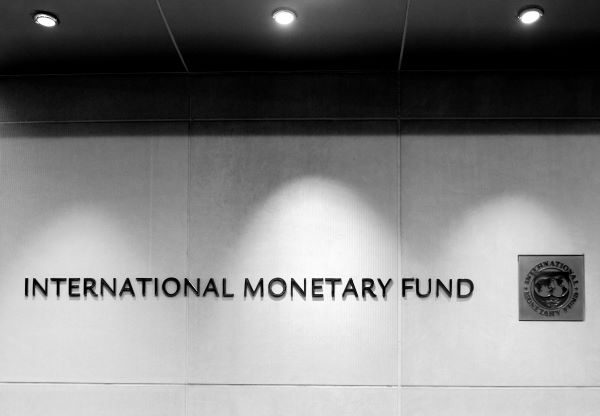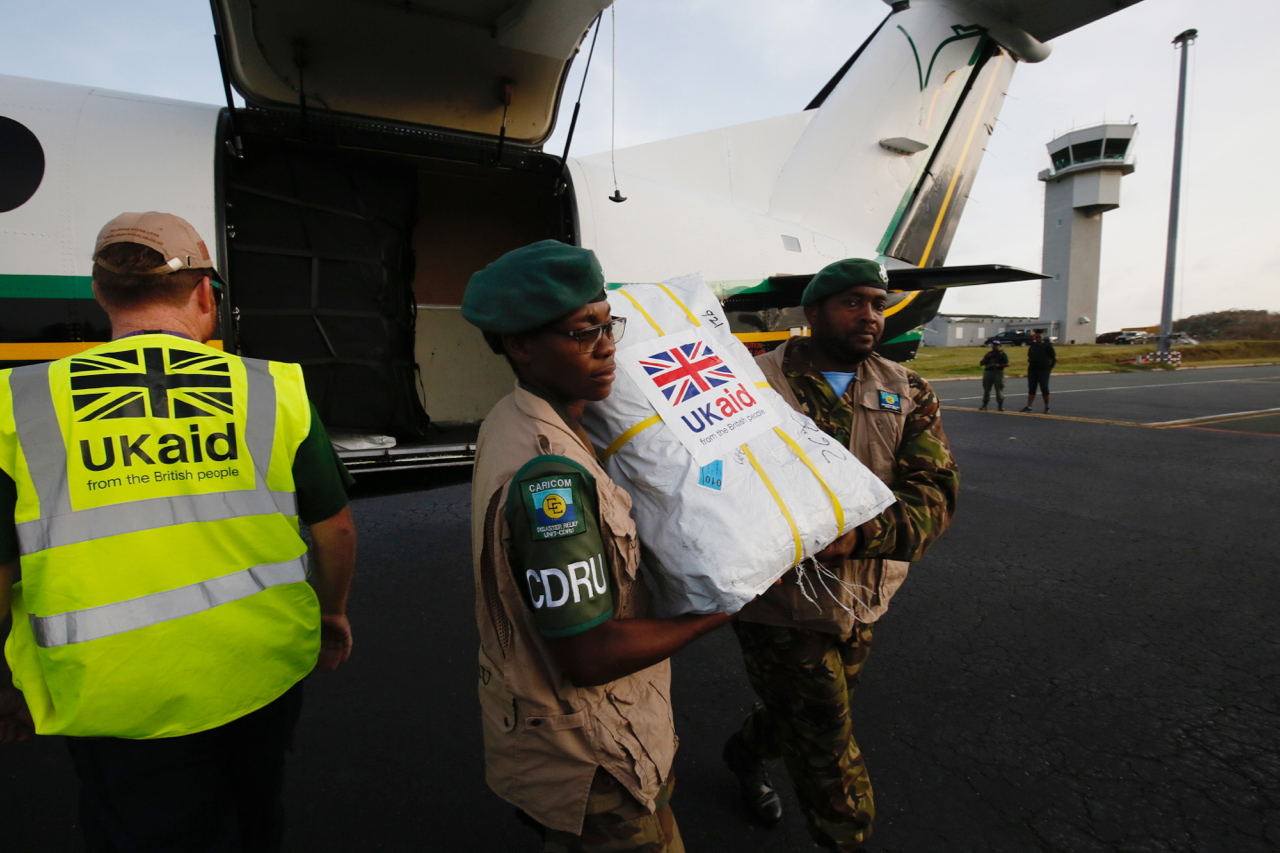Recommended
The phrase “giving with one hand while taking with the other” has rarely been more appropriate than in examining the UK’s recent approach to the aid budget. Under current plans, by increasing its contributions to the IMF’s concessional lending pot, the UK will actually reduce the amount of aid available to developing countries and receive credit for doing so. The result is that every £1 billion that the UK lends to the Poverty Reduction and Growth Trust Fund (PRGT)—the IMF’s concessional lending facility—would lead to a net loss for developing countries of up to £310 million.
This note sets out how this perverse outcome has come about. It starts with explaining why the rules for scoring ODA on loans are not well-suited for measuring loans to the PRGT, which has separate (ODA-eligible) accounts that provide a subsidy on PRGT lending and cover the any losses that lenders may incur. It then outlines how the UK is planning to exploit the rules in order to minimise actual spend on ODA while claiming to meet its legal target, and how this will decrease flows of finance to developing countries,
It makes the following recommendations:
- In the immediate term, the new Foreign Secretary should push for any use of SDRs to be additional to the 0.5 percent of GNI aid budget, or she will see an unnecessary reduction in the budget she controls. Should this fail, the IMF—although it is not its role—could stop the UK’s actions reducing flows of finance to developing countries by choosing to draw on other creditors first. Otherwise, other potential creditors should commit as much as possible to the PRGT, which would dilute the UK’s share of total commitments, and therefore the extent to which the IMF draws on the UK as a creditor.
- Longer term, talks are ongoing about how to establish a new fund at the IMF that could be used to channel additional SDRs. When this fund is established, the special circumstances of lending to this fund should be accounted for in the ODA rules. If they are safe enough to be counted as reserves and subsidised by other donors (as with the PRGT) then they shouldn’t count as ODA.
How should lending to PRGT count as ODA?
Since the DAC’s “ODA Modernisation,” loans generally have been measured by their grant equivalent. This is sensible in principle but is made tricky by the need to choose appropriate “discount rates.” Elsewhere, I’ve argued that these are too high for bilateral loans, which exaggerate the amount of ODA recorded on each loan. Arguably, the same is true of loans to multilateral organisations, for which a discount rate of 5 percent is used. This is something that multilaterals have themselves questioned, despite a possible incentive to keep quiet on the issue (given that donors might favour loans to them over bilateral loans more if it counts for more ODA). AFDB argued that they should be closer to the (lower) rates used for internal burden-sharing. The UK uses a lower rate for loans to the World Bank (see business case) for its own accounting purposes. However, this is not the only problem with how loans to the PRGT are recorded.
Estimating the grant equivalent of a loan is supposed to make it comparable to a grant: how much sacrifice is the donor actually making? This cannot be measured in terms of actual spending in the case of loans, given that over time any individual loan could actually make money, but also risks losing it. Instead, it should be thought about in terms of opportunity cost: could the loan capital have been put to more profitable use while maintaining its status as a reserve asset? In the case of loans to the PRGT, the answer is no. Loans to the PRGT have a grant element of 31 percent[1] (when they are disbursed), implying that they are nearly a third as good as grants, but arguably they should not be counted at all.
What is the opportunity cost of lending to the PRGT?
The actual mechanism is convoluted (see figure 1), but essentially, loans that donors make to the PRGT are interest-free. Although the PRGT pays interest to creditors, an equivalent amount is lost due to the reduction in holdings of SDRs relative to allocations (see this excellent primer for more detail). The countries that ultimately borrow from the PRGT invariably have low credit-ratings. Therefore, on the face of it, a loan to the PRGT is essentially an interest-free loan to risky borrowers, which suggests that lenders could earn a higher return for the level of risk they assume, and therefore that there is a significant opportunity cost. But there are two reasons why this argument is wrong.
First, this dramatically overstates the risk involved in the transaction. Lending to the PRGT is incredibly safe: as well as a subsidy account that covers the cost to the PRGT of providing interest-free loans, there is a reserve account for the PRGT that is intended to cover any losses incurred on such loans, and so it is highly unlikely that creditors to the PRGT would ever incur any losses themselves. Indeed, donors have never lost money lending to the PRGT. Not only this, most lending agreements with the PRGT include a get-out-of-jail-free option: if lenders are facing liquidity issues themselves they can recall the loan early at no cost, further reducing the risk. In fact, such loans are sufficiently safe that they still count as international reserves. The UK accounts do not even distinguish SDRs lent to the PRGT from other SDRs. In a world where many safe (and even not so safe) assets have negative yields, it is hard to argue that the HMT could earn a positive return while maintaining this degree of safety.
Second, loans to the PRGT are made with SDRs. These are not dollars that can be invested in any asset that the government chooses: only IMF member countries and a select few multilaterals can hold them. If the UK did not lend SDRs to the PRGT, the most likely counterfactual would be that they sit at the Bank of England. Any other option would be more costly than lending to the PRGT. Therefore, the opportunity cost of PRGT loans is zero. Of course, the Treasury could substitute the SDRs for dollars: maintaining reserves and investing an equivalent amount of dollars in an interest-bearing asset of their choice. But as has been pointed out to civil-society organisations advocating for more exotic use of SDRs, doing so would decrease net reserves.
Despite the minimal risk, and the limited possible uses of SDRs, the ODA scored on loans to the PRGT are measured using the terms faced by PRGT-borrowers (10-year interest-free loans with a 5-year grace period, semi-annual payments). This is despite the wedge created by the separate reserve and subsidy accounts between the terms faced by donors, and those charged to borrowers. As a result, nearly a third of the face value of loans to the PRGT is counted as ODA. Investing in a remarkably safe reserve asset for a limited period, with an early-recall option, is considered to be 31 percent as much sacrifice as a pure grant. This is not credible.
Figure 1. Interest flows when donor lends to PRGT
Notes: Each solid arrow has an equal value. When the UK lends SDRs to the PRGT, its holdings of SDRs reduces relative to its allocation, creating an interest payment due to the IMF (general resources account). However, it earns the same rate on the loan to the PRGT, and so the net interest cost is zero. The borrower’s SDR holdings increase relative to its allocation, and therefore earns the interest that was previously due to the UK. Because the PRGT does not charge interest on loans to the borrower, the borrower has a net gain in interest. This is ultimately provided by donors providing grants to the subsidy account.
How the rules interact with the UK’s arbitrary ceiling to reduce ODA
For a number of years, this has allowed the UK to score significant sums of ODA when lending to the PRGT, making it that much easier to meet its (previous) 0.7 percent of GNI aid target, and depriving developing countries of resources in the process. The recent cut in the target to 0.5 percent, coupled with discussions of how to use the UK’s new SDR allocation, have shone a new spotlight on this question. The reduction in the target has made draconian cuts to the UK’s bilateral aid budget inevitable; the Treasury’s insistence in counting PRGT lending under the target makes them bigger than they need to be.
The Treasury’s argument is that it is simply following the rules on ODA-measurement, and is “fully guided by and in accordance with” the rules. It is not obliged to count everything it can according to the rules - the UK is apparently the only country to count PRGT lending as ODA - but generally, the argument has merit. Choosing to deviate from the rules might risk undermining the notion of shared rules altogether. But this argument is less convincing if the rules are problematic to begin with. What’s more, the UK is not just following the rules, but letting such accounting drive its ODA spending decisions, regardless of the economic logic.
Obviously, the UK does not have unlimited resources and on some level, choosing to spend on one thing will mean choosing not to spend on another; this is the nature of public finances. What makes it particularly damaging in this case is the fact that genuine grant financing is being displaced more than one-for-one. 10-year loans from the PRGT are not as good as grants, nor even 31 percent as good as grants. Even if that was the case, given the separate (and ODA-eligible) contributions to the reserve and subsidy accounts, the benefit cannot be solely attributed to the UK anyway. As a result, for every £1 lent from the UK to the PRGT, developing countries lose out. The degree to which they lose out depends on your view on how lending to PRGT should be measured. But given the above, there is at least an argument that UK loans to PRGT should not be counted at all, in which case for every £1 billion the UK lends to the PRGT, developing countries lose £310 million. Not only is lending to the PRGT not additional, it is “subtractional.”
Could the IMF make a last stand?
There is one final consideration, which is that loans to PRGT count as ODA not when they are committed, but when those commitments are drawn down. For example, so far, the UK has committed around SDR 4 billion to the PRGT, but only SDR 2.7 billion has been drawn down by the IMF (scoring SDR 837 million as ODA). When the UK’s commitments will be called upon depends on the IMF, which has discretion over which creditor they choose when demand for PRGT loans arises.
The PRGT is demand led. When countries are facing balance of payments problems, they can request a loan from the PRGT if they are eligible. At that moment, the IMF will choose one of the creditors to provide the funds for the loan. Generally, the IMF chooses creditors to maintain “broad proportionality” (section III paragraph 4) between the amounts committed, and the amounts drawn. But this discretion means that - in theory at least - the IMF could simply de-prioritize the UK as a creditor, calling first upon other countries to have made commitments, and resorting to the UK only if there is unmet demand. The IMF anticipates that an additional SDR 12.6 billion in loans will be demanded over the next 4-5 years, and it is entirely feasible that this could be met with agreements from other creditors (the IMF is currently trying to broaden the group of creditors on which it calls).
Although the IMF has stated the intention to maintain broad proportionality, there have in the past been quite large divergences between share of total commitments to the PRGT, and share of disbursements to the PRGT (figure 2). Because the UK is the only country cutting other aid to make room for such loans, de-prioritizing the UK as a creditor would increase the overall finance available for developing countries, mitigating the damage caused by the combination of the arbitrary target and controversial ODA rules.
Figure 2. Share of total commitments to PRGT against share of outstanding PRGT debt to creditors (with 45-degree line)
Source: IMF Financial Data Query Tool
The IMF is likely to be reluctant to make a decision that breaks with convention and could be seen as political meddling. It certainly is not the IMF’s job to try and rectify the issues created by the UK’s miserliness in conjunction with controversial ODA rules. But, viewed objectively, putting the UK last in the queue as a creditor is most conducive to the PRGT’s core objective, of ensuring the financial and macro stability of its PRGT-eligible members. The difference might be small: potentially a few hundred million dollars a year, at least some of which will benefit countries beyond the PRGT’s jurisdiction. But the UK is the only creditor for which loans will not lead to additional flows of finance, which is surely the whole point of the PRGT’s recent drive to broaden its base of creditors. To draw on the UK’s commitments is to reallocate the pie, rather than increase the size of it.
If the IMF is reluctant to deviate too far from proportionality between commitments and drawings, then the actions of other creditors will obtain a new importance. The more other creditors commit, the lower the UK’s share of commitments will be, and the less its commitments will be drawn upon. It doesn’t matter if the amount creditors commit is many times larger than the amount that could realistically be disbursed: demand for such commitments will be limited by other factors (such as terms and conditionality on PRGT loans). The objective would be to dilute the UK’s share.
ODA rules for new fund should be tailored to circumstances
In the immediate term, those in favour of the UK maintaining its position as a leader in development finance should be pushing back hard against the Treasury’s insistence to count PRGT lending as ODA. There is little merit in “following the rules” if the rules don’t make sense. Exploiting the issues with those rules is far worse. The Treasury has options to change their view without losing face, and the new Foreign and Development Secretary should think about the impact of counting SDRs on the budget she controls. But if the Treasury remains resolute, advocates should not be pushing for the UK to commit more to the PRGT, as the more the UK commits to the PRGT, the fewer real resources are transferred to poorer countries. Instead, other countries should be persuaded to step up their PRGT commitments, diluting the UK’s share.
Longer term, the IMF is discussing a new fund, so far called the Resilience and Sustainability Trust. The details of this fund are yet to be determined, including what its function will be, which countries are eligible for lending, and whether the structure will mimic the PRGT in ensuring that loans from creditors still count as reserves. The DAC should consider carefully how the design of this fund affects whether and how contributions should count as ODA. If there are separate (ODA-eligible) funds that provide the subsidy on the loan, then the grant element should not be calculated according to the terms faced by the ultimate borrowers. If there is a separate (ODA-eligible) account that provides for losses, then this should be reflected in the discount rate. This would ensure both that the fiscal effort is measured consistently across different instruments, but also that the design of ODA rules don’t exacerbate poor decisions taken by its members.
This note benefited from excellent comments and suggestions from Ian Mitchell, Mark Plant and Ranil Dissanayake. Any errors remain the author’s own.
[1] This is calculated from the loan terms: zero-interest, 10-year loans with a 5-year grace period and semi-annual payments, evaluated using the discount rate used for loans to multilaterals of 5 percent.
Rights & Permissions
You may use and disseminate CGD’s publications under these conditions.






